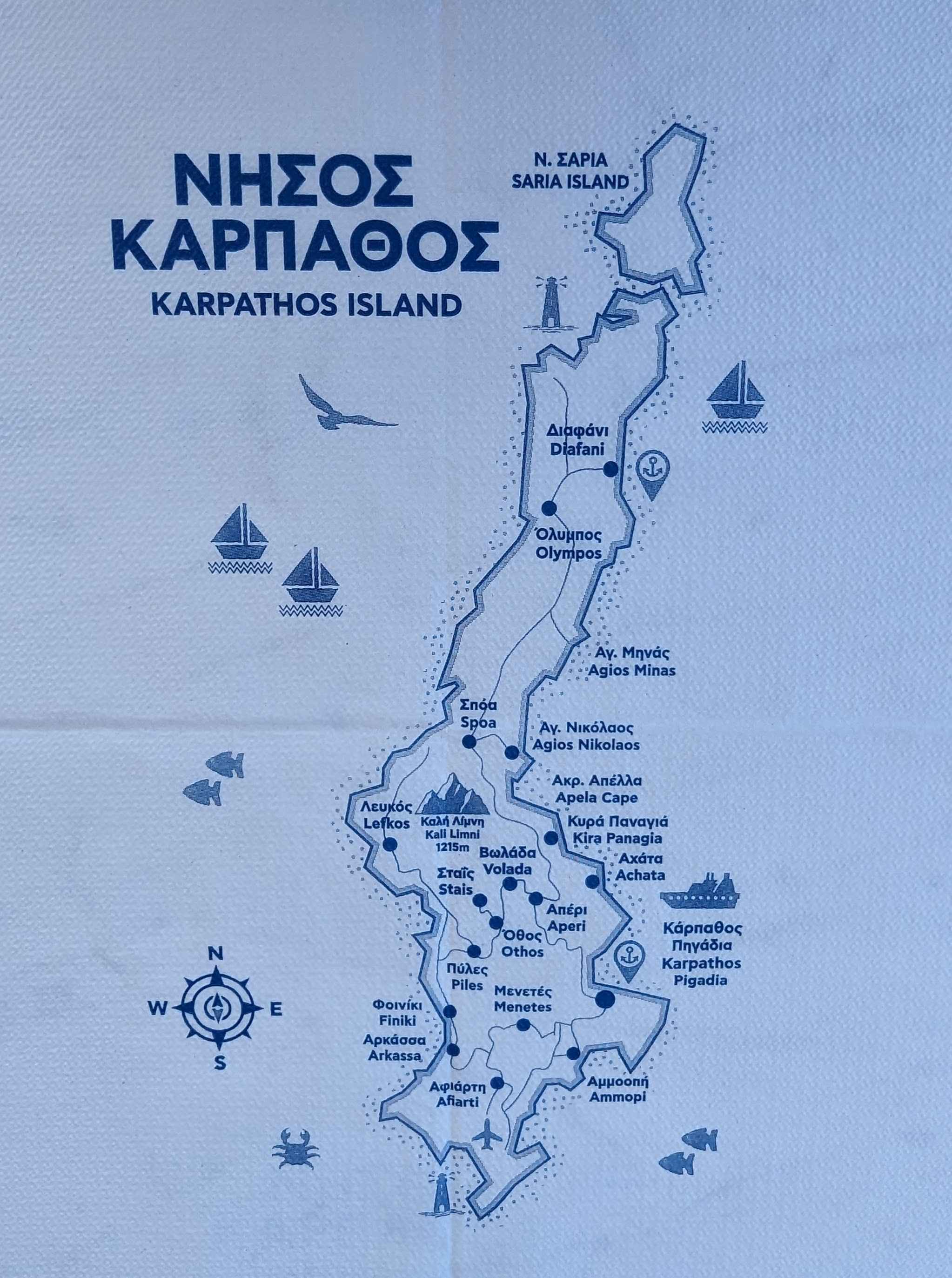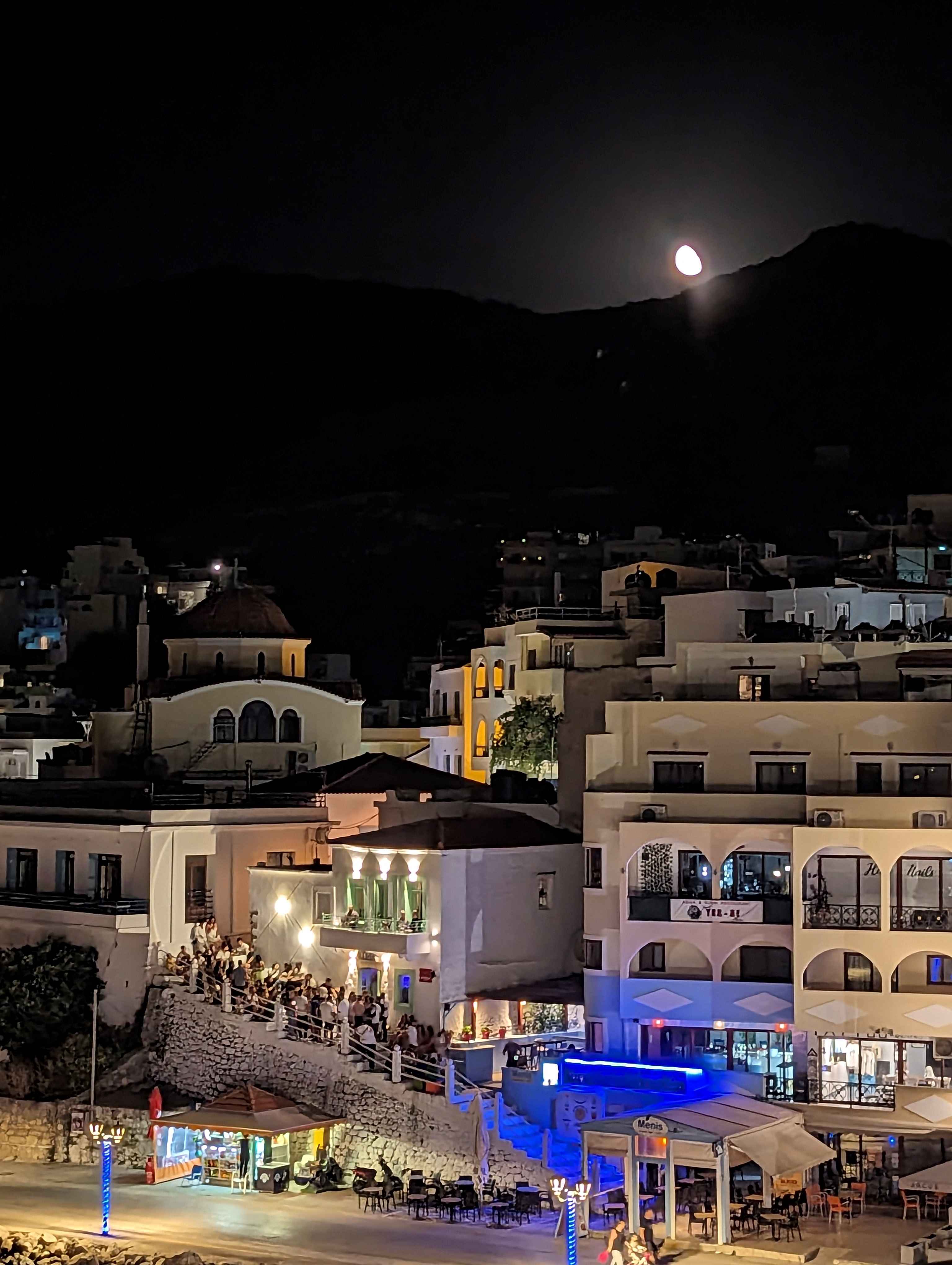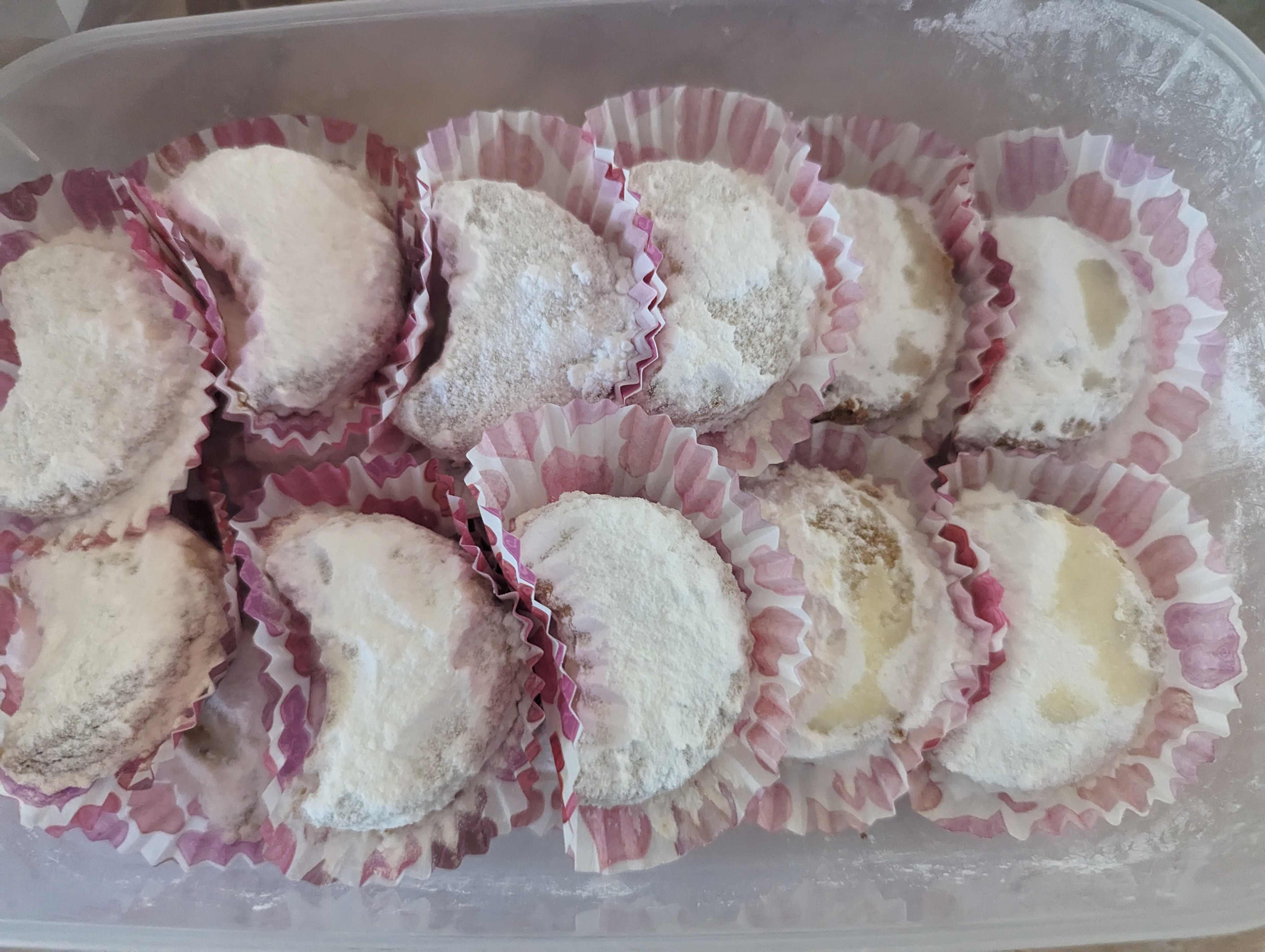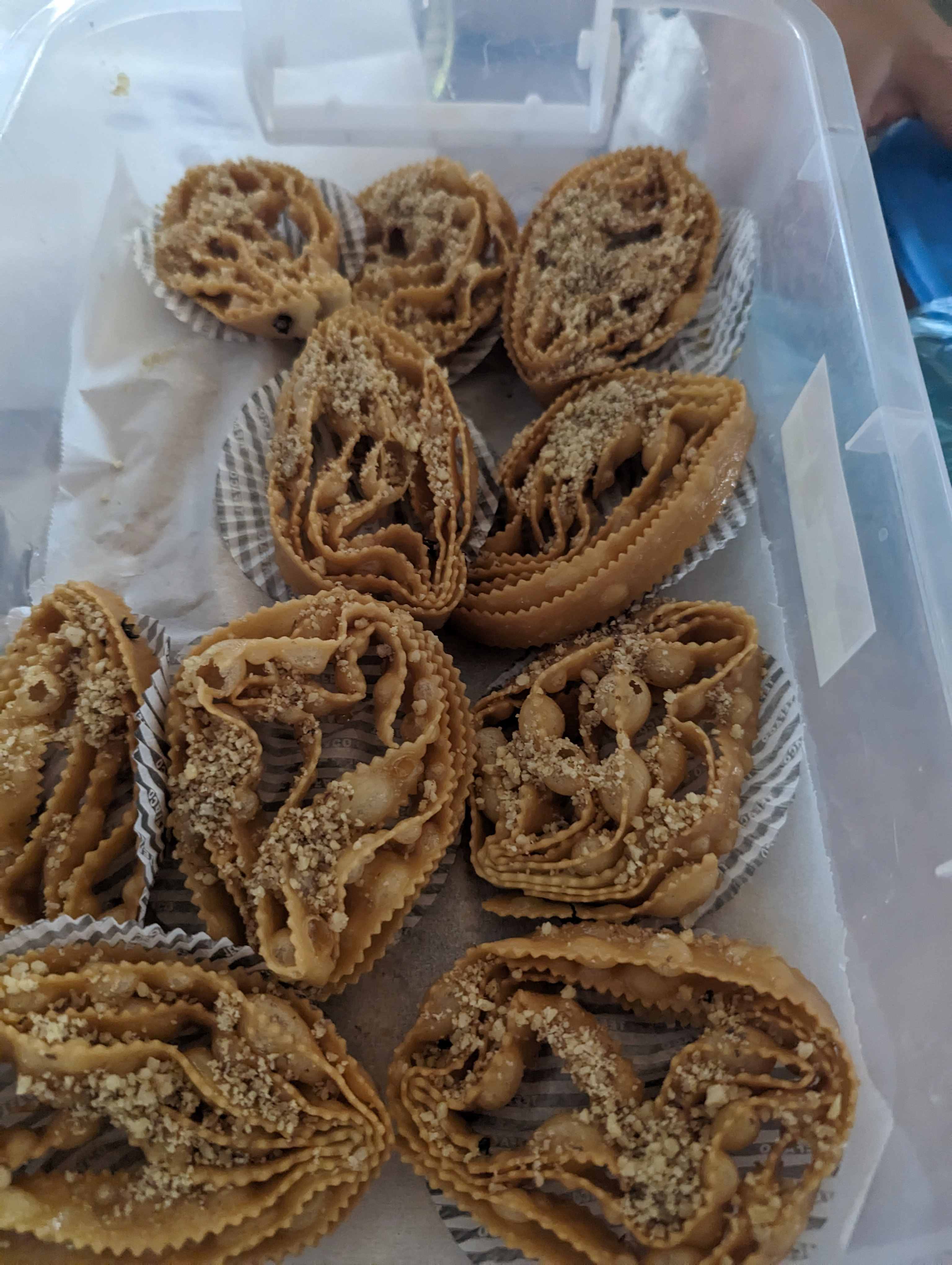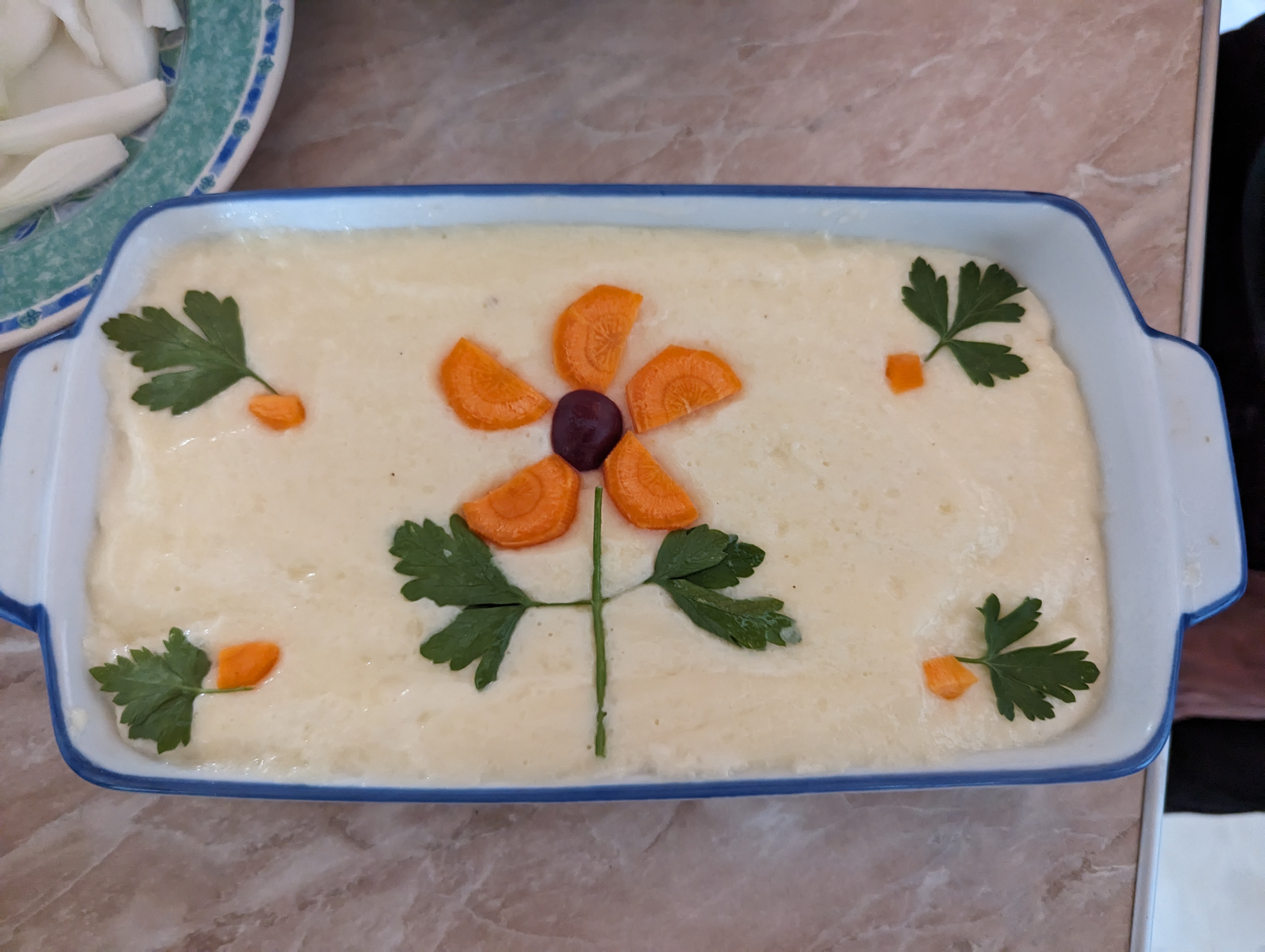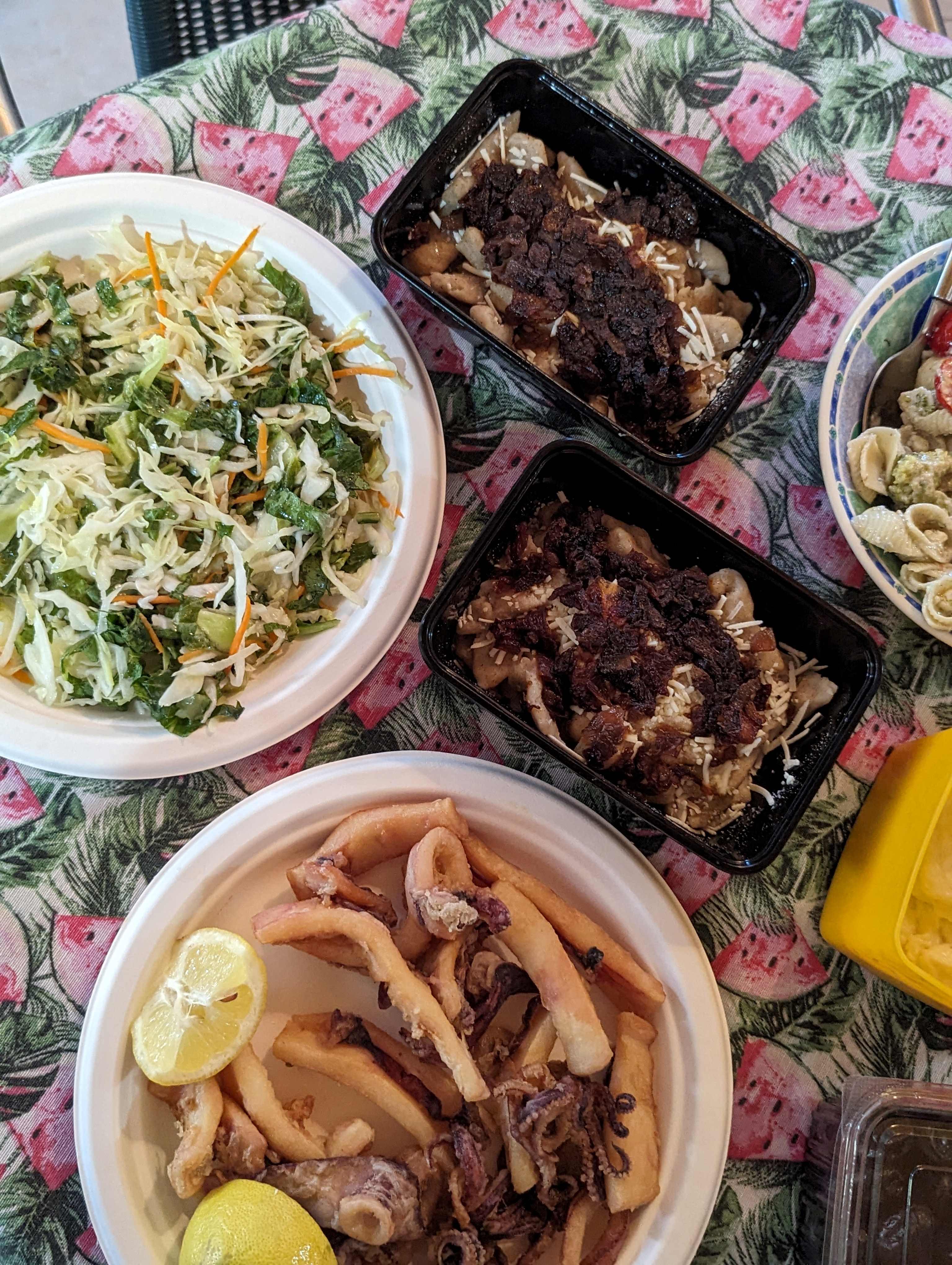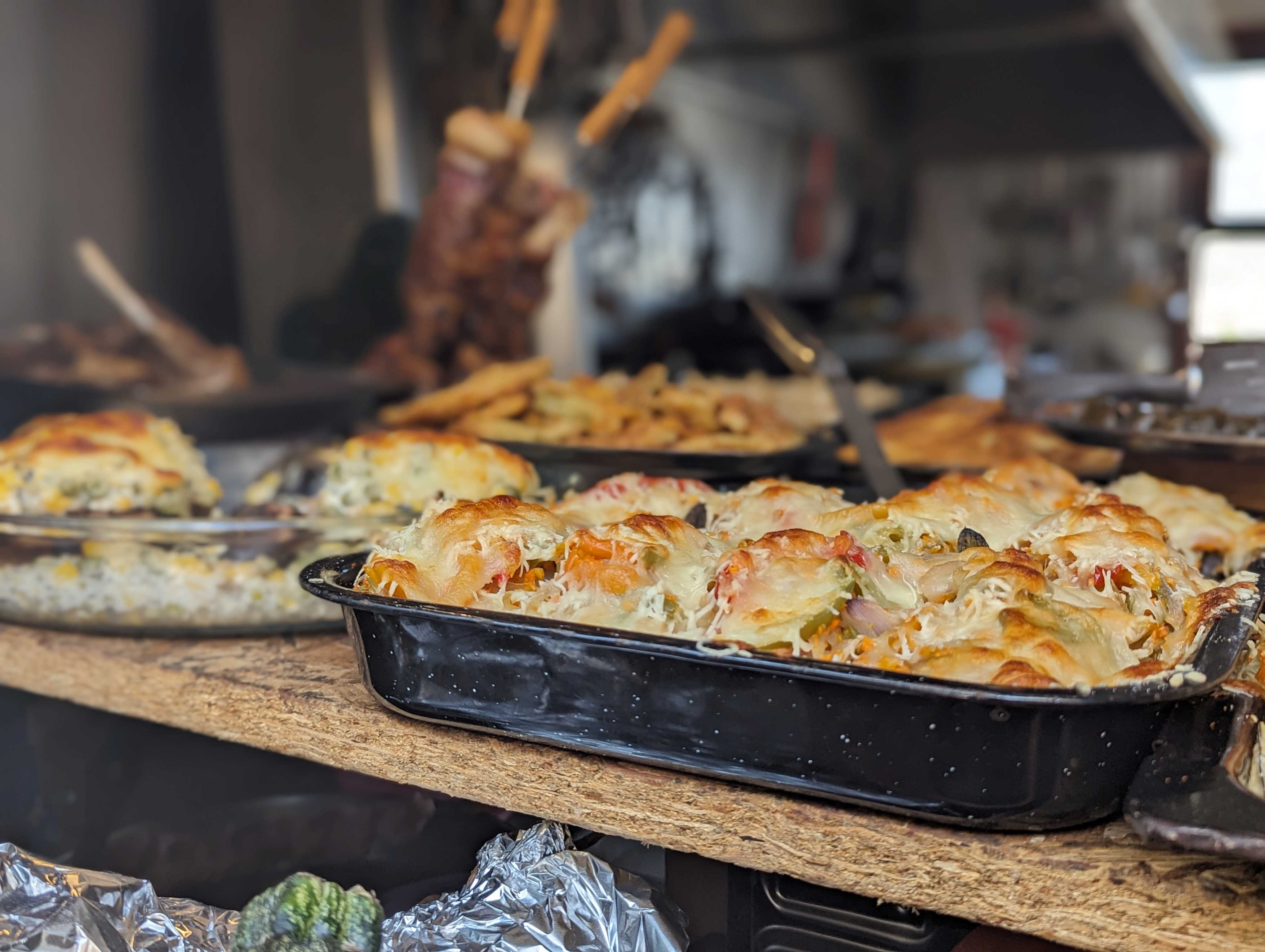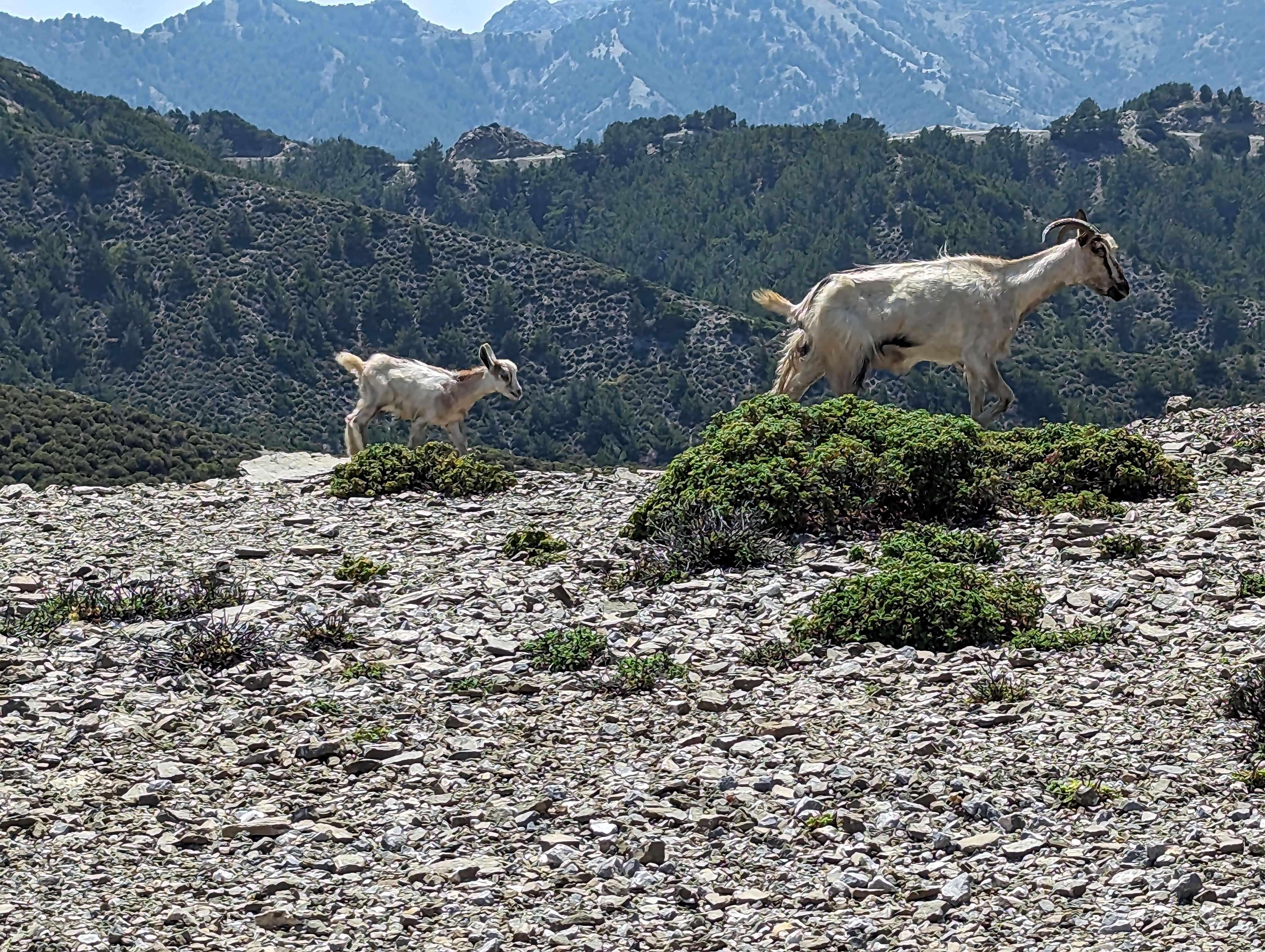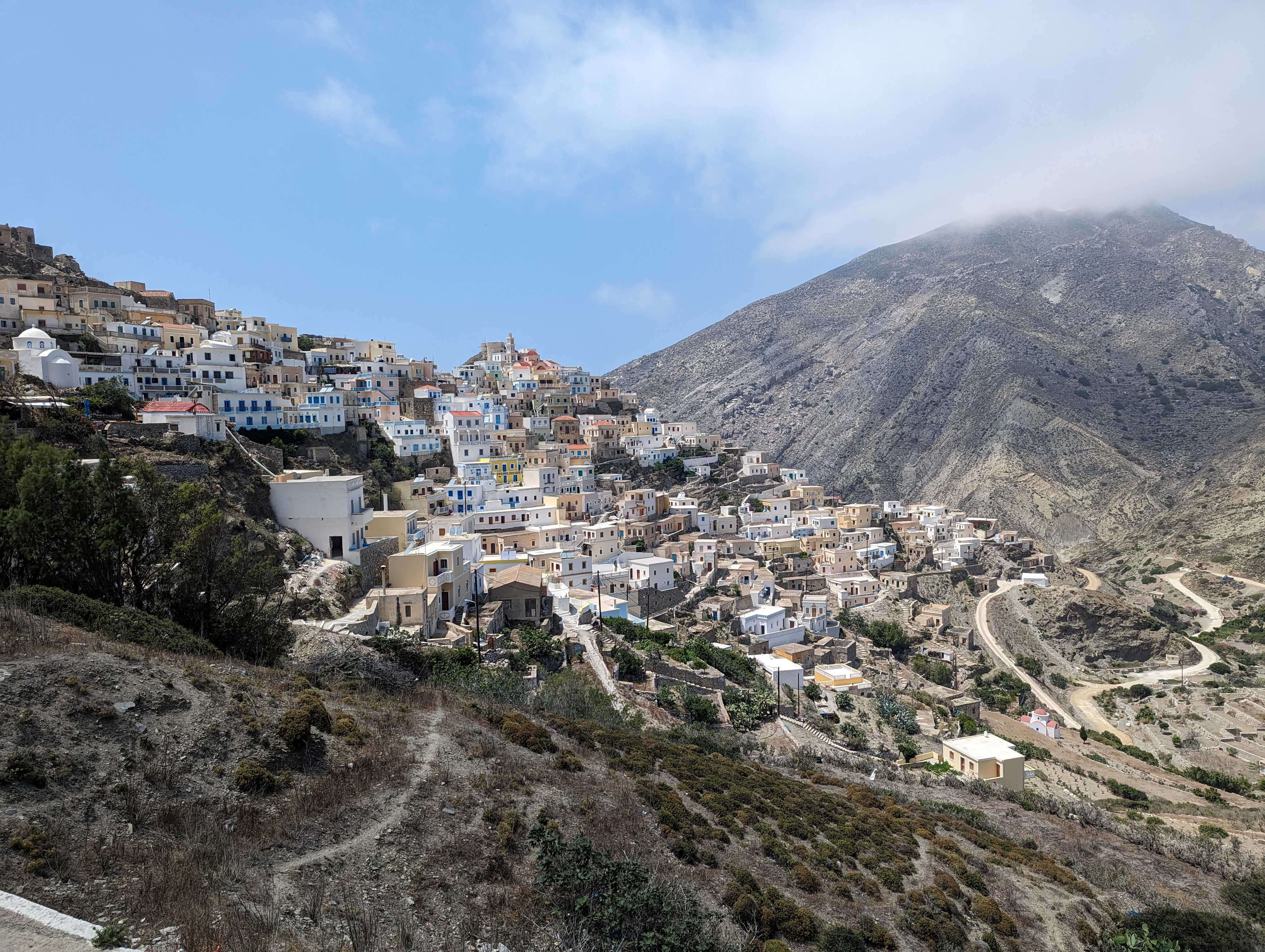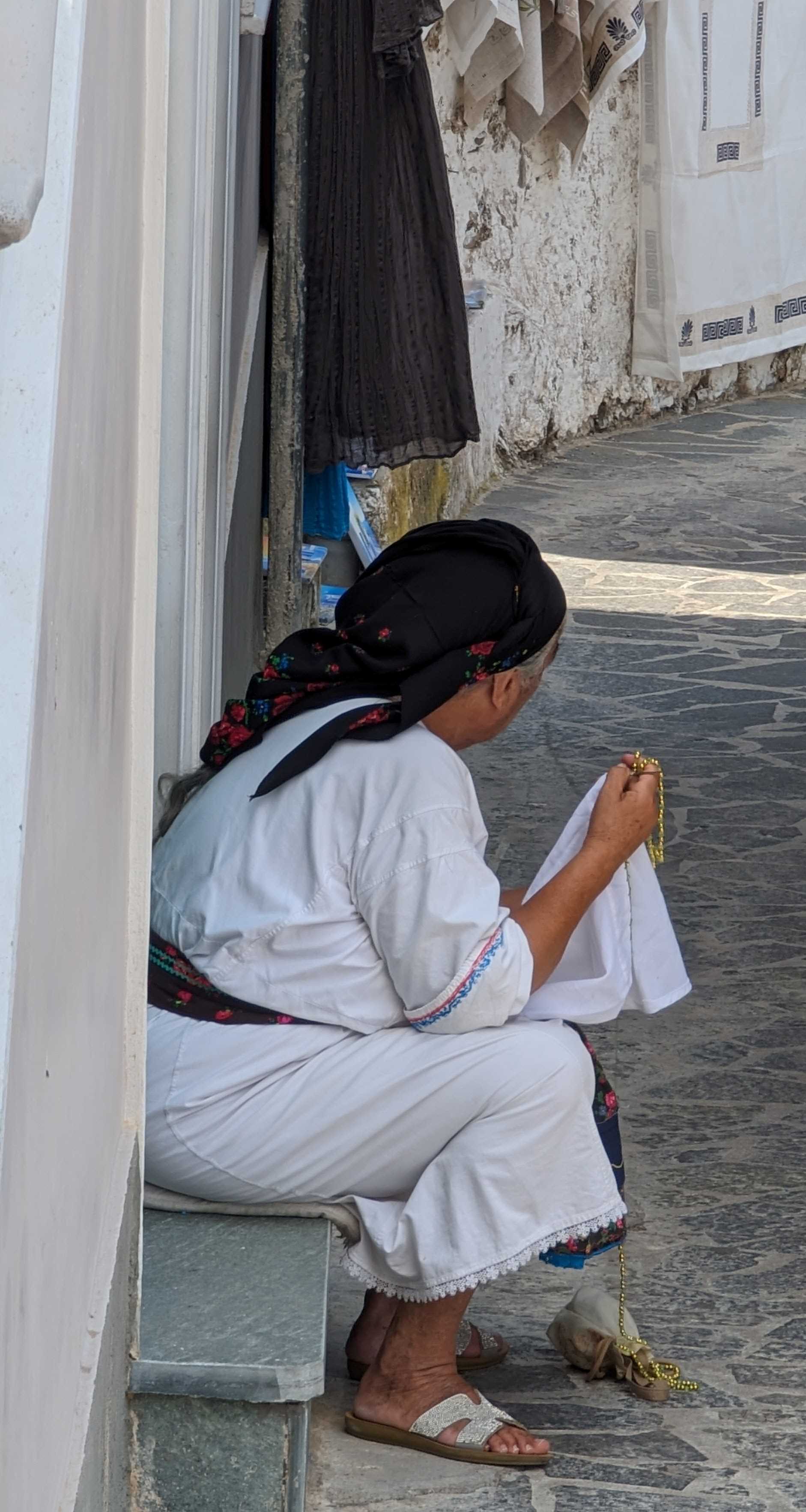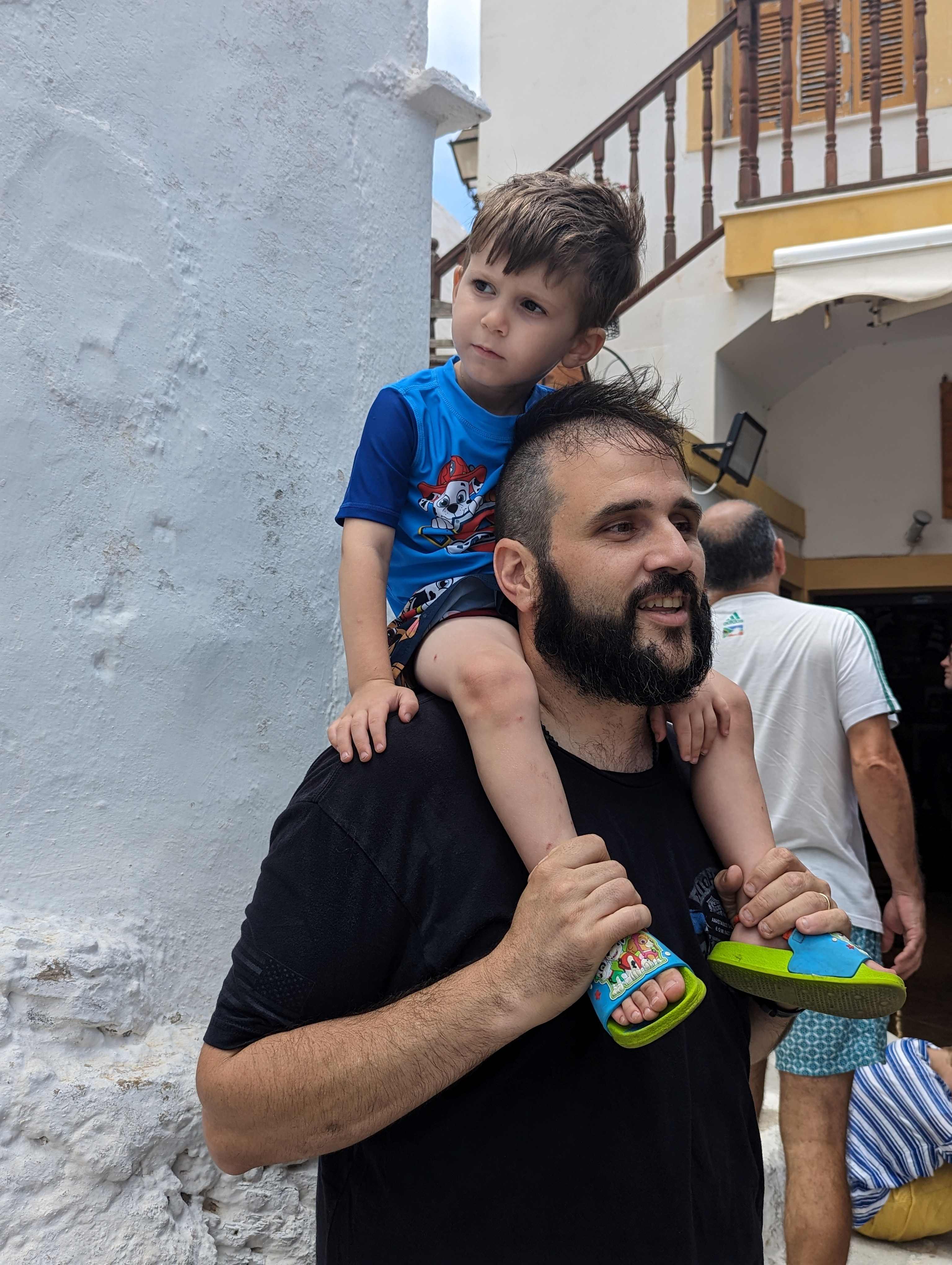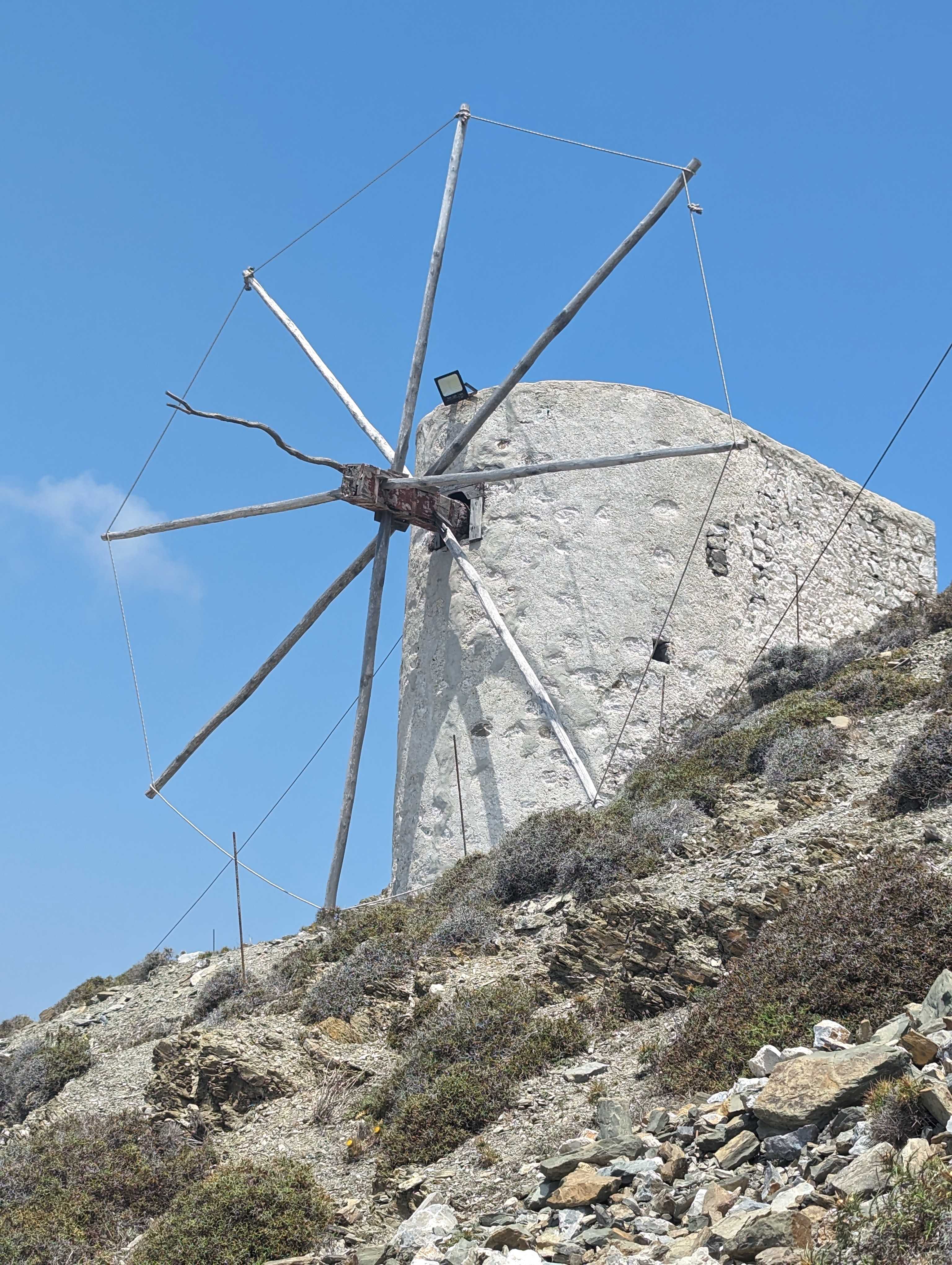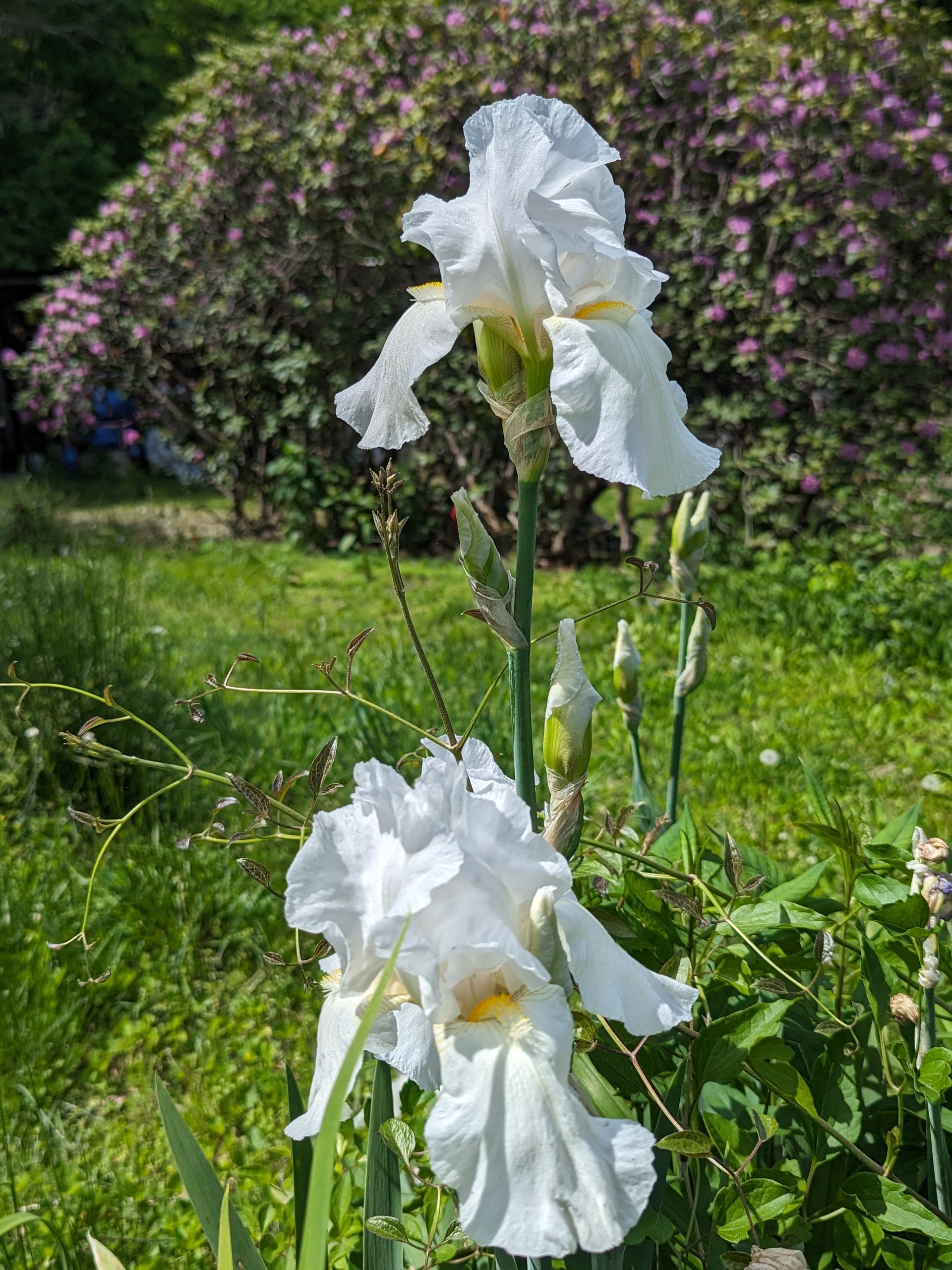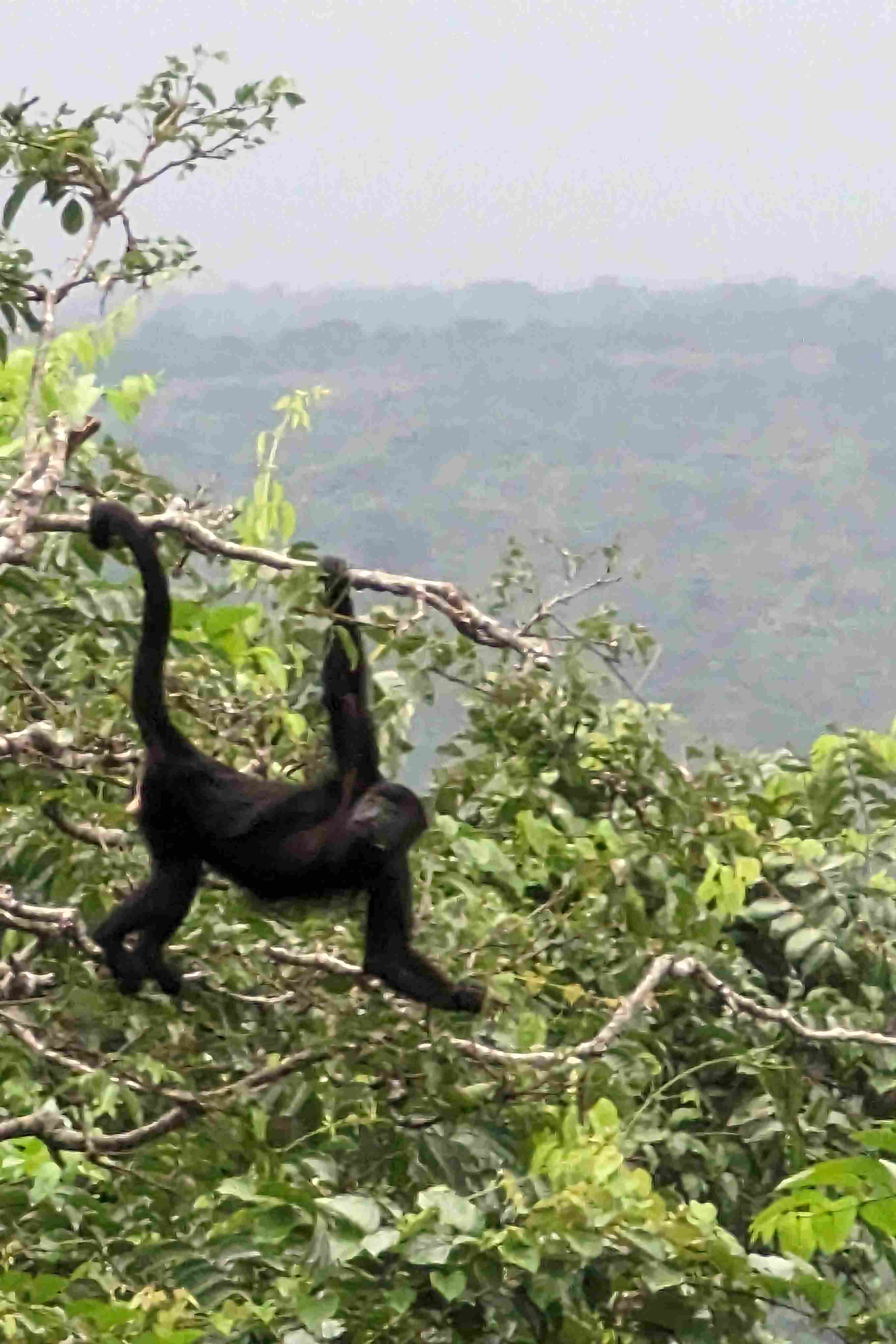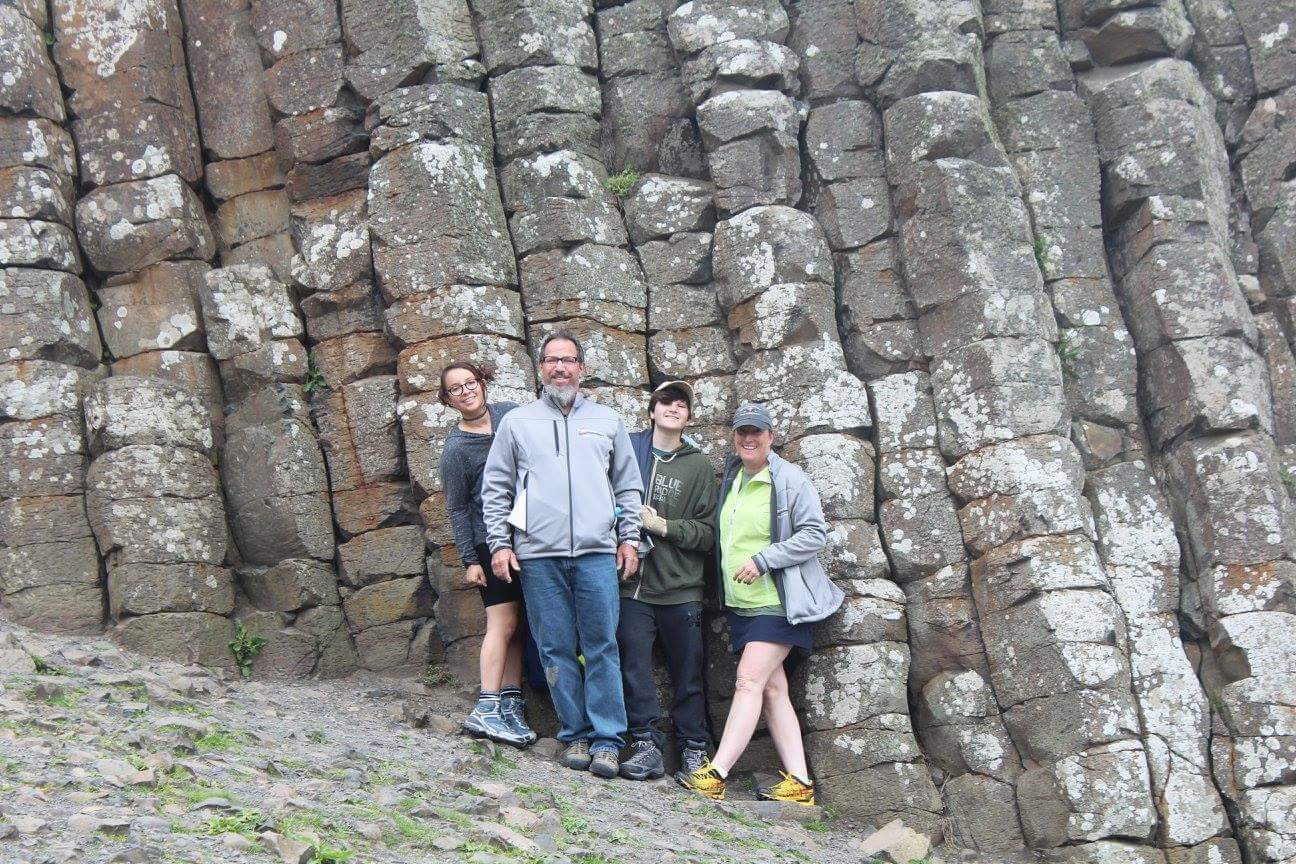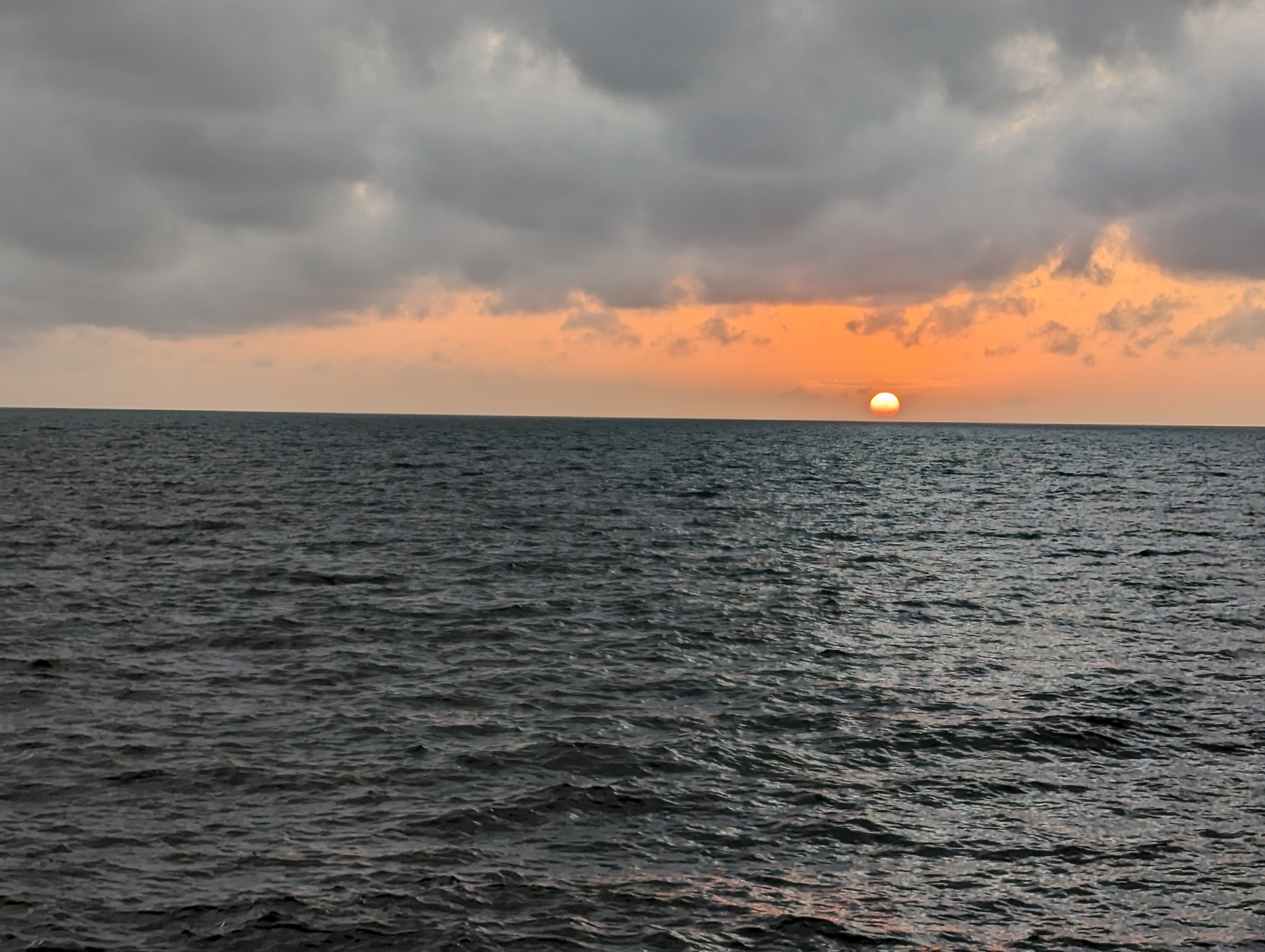- Heaven on earth. Achat Beach.
- A menu map of Karpathos.
- The beauty of Pigadia.
Our trip to Karpathos, Greece, began as a joke. Well, not really, Here’s how the story goes.
We were visiting Danny’s niece and her husband in New York City. It was a reunion delayed by the busyness of life and COVID. And a long-awaited meeting with our 3-year-old great-nephew, Vasilis.
Through pizza and a lot of laughter, we talked about an upcoming destination wedding. A young cousin was getting married in Italy. Margot explained they would be in Greece for the summer for their annual holiday with her in-laws. Her husband, Michail (aka Mike), was born in Greece, and with the birth of the first grandson, their summers were spoken for from here to eternity. Built-in babysitters lived on the island full time – niece, mom, and Yaiyai (grandmother), who cooked daily.
It sounded delicious.
I heard myself say, “Well, we will be there anyway; we will come to meet you!”
Danny looked at me quizzically.
Margot and Michail looked surprised.
I continued, “Really, what’s the big deal? We are already taking the kids to Sicily after the wedding; we will head to Greece when they leave. Where is your house?”
And that’s how I learned where Karpathos Greece is (to be honest, that’s how I knew Karpathos existed).
That was January, but the first week in July, we were boarding a plane in Naples, Italy, bound for the small island of Karpathos. The flight was packed. It was the first direct Naples-Karpathos flight, and the Italians on board were as excited as we were to discover an island less traveled.
We arrived after dark, the last flight of the day.
Located in the Southern Aegean Sea, between Crete and Rhodes, Karpathos is the second largest island of the Dodecanese, after Rhodes. It’s retained a genuine, natural, and authentic beauty compared to the other Greek islands I’ve visited. It is an island with green mountains, gorgeous beaches, traditional villages filled with color and customs, and a combination of home-cooked food, late-night bars, and cafes.
Two things we noticed straight away; one, as we landed, rather ungracefully due to the crazy Greek winds, Danny noticed there were very few lights below us. That’s because there are few developments or people on Karpathos.
Two, Michail knows everyone on the island. He was chatting inside the doorway with the guard when we found our way through security. They had gone to school together. Same for the cab driver, Michail’s best friend.
The tiny airport had a familiarity about it. It was a precursor for the 5-day journey that followed.
We set off for a 15-minute drive to our Air BnB in Pigadia. The seaside village is the island’s heart, comprising clusters of restaurants serving wide-ranging fare and shops. Thrown in the mix are a handful of grocery markets, pharmacies, churches, local residences, and a scattering of hotels. When we arrived at the BnB, our host’s dad greeted us. Michail shook his hand, asking how he was doing, and introduced him to his wife and son Vasilis, named after Michail’s dad.
Of course, he knew him as well.
The first night everyone went to their respective houses. After settling in, Danny and I stepped out for a bite. On our first evening out, we chose a family-run place called Manolis, ordering a Karpathos Salad (a Greek salad topped with Koulouria, a Karpathian bread), Chicken Gyro, and a grilled meat plate. We ordered too much food. It was delicious.
During the walk home, we ran into Michail, Margot, Vasilis, and the rest of the family – Michail’s mom (Tina), sister (Zoe), niece (Tina), Aunt Joanna, Uncle Michael, and their boys Nikko and Panagiotis.
We walked the streets briefly as everyone talked over one another, hugging and kissing random passersby, a mix of Greek and English. We soon learned the pace to get anywhere on the island by foot would be a consistently slow journey. It felt as though we met the entire town.
We made dinner plans the next night with the whole crew except for Yaiyai, who would stay home most nights to prepare the meal for the following day. This would be the theme for most days between Yaiyai and Tina; something was constantly being designed for us to eat.
The first morning we awoke, Margot arrived with Yaiyai’s freshly baked pastries. The promise of homemade meals kicked into reality. During our brief visit, Tina and Yaiyai seemed to cook us every dish in their repertoire makarounes, a hand-made pasta shaped like small, fluffy dumplings, boiled then stir-fried with butter and mizithra (goat cheese), similar to Italian ricotta salata.
They served up fried whole fish, fried cod, a beautifully presented Skorthalia (Garlic Dip), stuffed and fried squash blossoms, stewed chicken on spaghetti, sticky sweet candied tomatoes, pasta salad, patates tiganites, souvlaki, sausage, and pork chops. The list goes on.
- kourapiedes, sweet, light crescent moons of love.
- Karpathian Baklava.
- The most beautifully decorated garlic spread/dip.
- A family spread at the Sarris table.
- Traditional foods on display in Olympos.
My sweet tooth was delighted by kourapiedes, sweet, light crescent moons of love; Karpathian Baklava by Momma Tina (I can only pray she shares the recipe with Margot so I can borrow it); and Yaiyai’s special unnamed pastry with a secret ingredient, Ypovrichio.
We ate so much that I began taking photos of Danny’s stomach to chronicle the final leg of our fantastic journey. If Italy put on a couple of pounds, the homemade bounty of Karpathos put on a dozen more.
- Domesticated goats wander the island freely. Climbing steep hills and surprising you on every turn.
- A twist and a turn and we arrive in the outskirts of Olympos.
Aside from family meals, we had some memorable moments after stomach-turning drives along winding roads closely guarded by ravenous cliffs and steeled mountains. While the car rides were a short distance, 20-minute drives in Greek time (family joke), some routes to get wherever you are going are along narrow, twisty roads with nothing to stop your car from going over the edge. An errant goat roaming the cliffsides may slow you down but won’t prevent a tumultuous end. Be sure to ask for the most effortless drive to your destination versus the shortest.
Anyway, I digress; our first driving outing was to Olympos, a charming tourist-focused village a short drive from another village destination with a beach. The villagers of Olympos wear traditional clothing and keep the local dialect due to the isolation of this place from the rest of Karpathos.
- Olympos women keeping the traditions alive.
- Vasilis gets a lift from Dad through the village.
- Olympos windmills
We walked the narrow streets and shopped, stopping to see the restored windmills as Michail’s family shook a few hands. Danny and Margot dragged behind us as they caught up on everything. Then we were off to lunch and a swim in Lefkos, where we ate everything imaginable at Ammos, an open-air restaurant by the sea. Sardines, fried cheese, fried calamari, grilled seabream, octopus, stuffed calamari, garlic dip, tzatziki, and more Karpathos salad.
By the way, Greek calamari is a huge unfamiliar size to most Americans – except Danny.
Our planned meal in town with all the family was at Erasmias, Michail’s favorite Gyro; still stuffed from lunch, we made it there for dinner. Michail’s pick was good. We were served pork gyros, marinated and assembled with Patates Tiganites, grilled onions, tzatziki, and tomato.
The following day we headed out for another beach, Margot’s favorite. It was the most beautiful beach I have ever seen.
I grew up on beaches in the Northeast and have lived on Captiva Island, Fort Myers Beach, and, most recently, Belize’s Ambergris Caye. Achata Beach was beyond my dreams of what a beach could be.
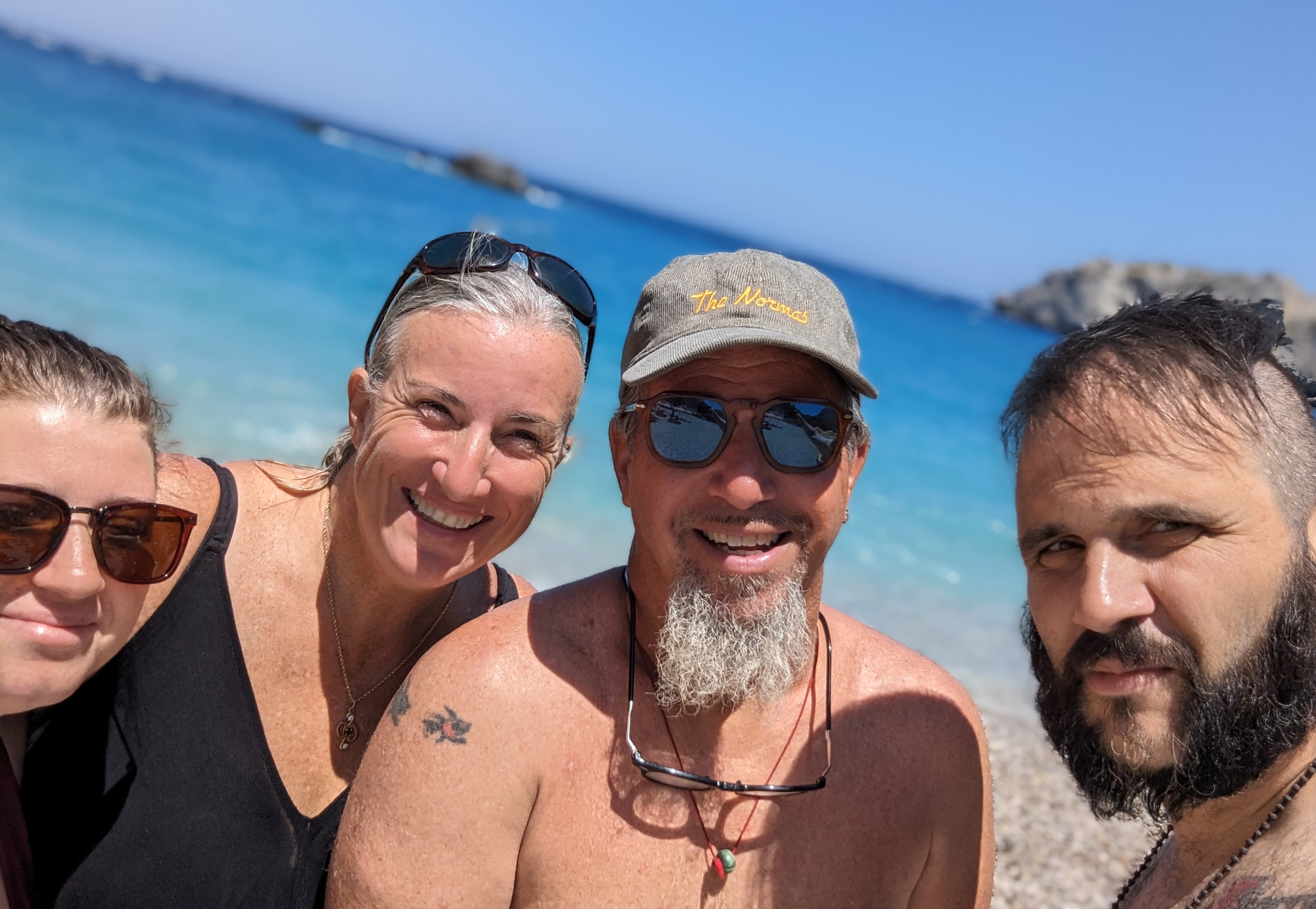
Margot, Michelle, Danny and Michail at Achat beach.
Beautiful water-worn smooth stones line the shore, and cliffs rise along the sides, sheltering the bay’s beach. The most pristine emerald and blue waters call your name for a chilly plunge. We felt like honeymooners discovering a nearby cave on our own during our first two visits. We had a lot of wind on both days, but it did not deter us from the crashing waves. Neither Danny nor I are big “beach-sitters,” but looking out on the water in this place was inspiring.
A bonus at Achata is Anna’s Taverna. Another family member, Cousin Anna, and her family serve some of the freshest seafood around – sardines, calamari, and small fish platters – along with laughter and love.
One final note. Every morning, Danny and I walked down to Cafe Pantheon and had coffee and a biscuit or Karpathos breakfast. After typical cappuccinos on the first day, we discovered Freddo Cappucino—a fantastic invention. Greeks often intertwine the freddo with the frappe, the original iced perfection. Interestingly, both were born of a love of caffeine and commercial coffee vendors.
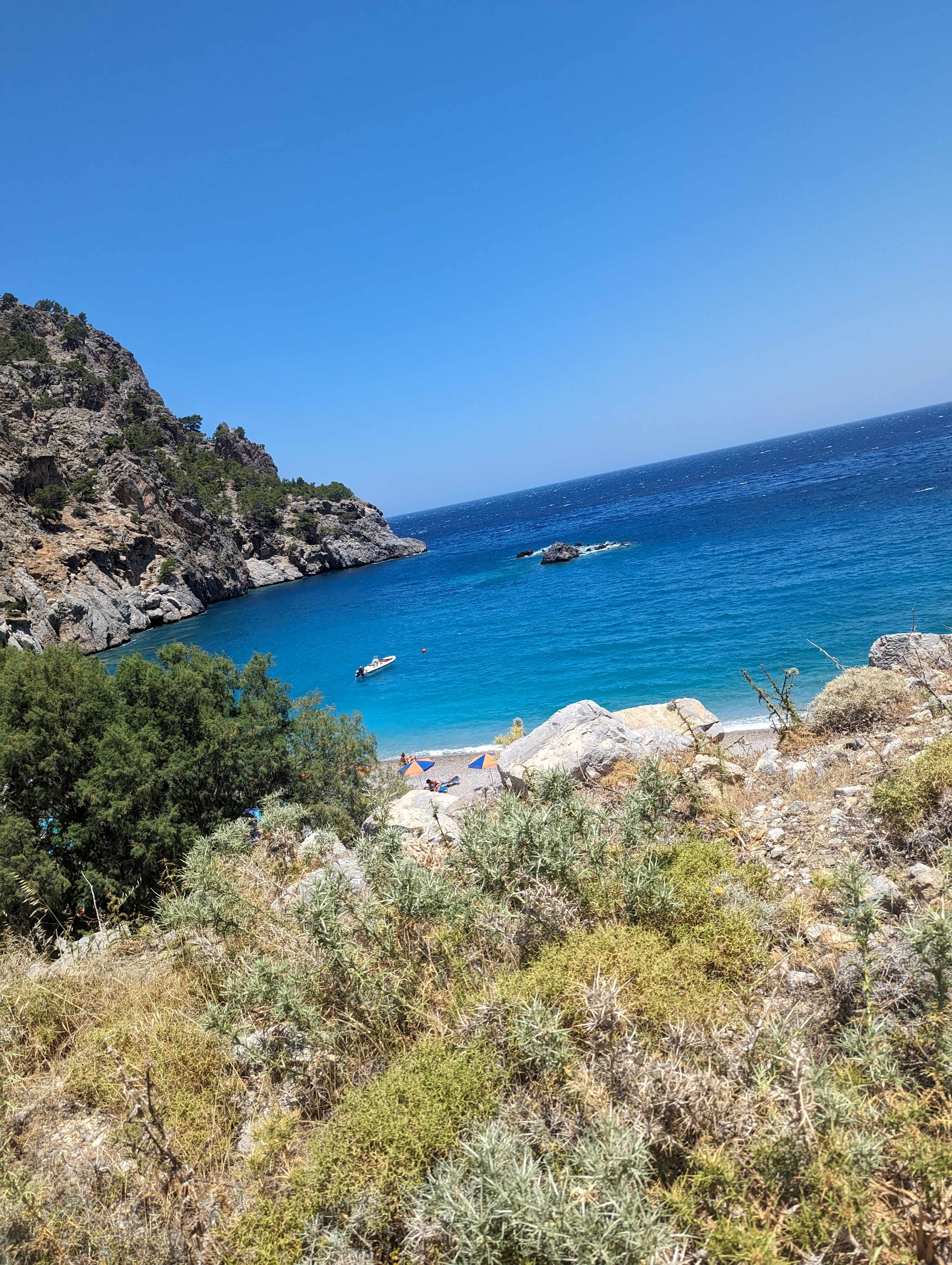
Heaven on earth. Achat Beach.
It turns out the frappé was invented through experimentation by Dimitris Vakondios, a Nescafe representative, in 1957 in Thessaloniki. This morning staple is made from Nescafé instant coffee and water – sugar and milk are optional. The Nescafe blends with a small amount of cold water into the thickest foam you can ever imagine. The frappé is simple and quick to make; it can be made in a shaker or with a particular frother.
First, you put in instant coffee, then sugar (if you take any), and then a small amount of water. Add extra cold water and milk (optional and to your liking). Then shake (or froth) well to dissolve and create a rich, thick foam. Serve in a glass over ice. The drink is always served with a straw, as the foam is too thick to reach the coffee below.
We loved it so much I ordered the instant coffee online (you have to get the version that says frappe on it) and the unique blending tool that creates the foam (like a milkshake maker).
In 1991, the company that imported Illy coffee, an Italian brand, to Greece decided to make a Greek version of a freddo (iced) coffee – their answer to the frappé. Rather than instant coffee, a double shot of espresso is shaken well and iced.
Like Karpathos, once you get a taste, you’ll be hooked. I am already looking forward to our return. In the meantime, I will sip my Freddo Cappucino, whip up some garlic spread, and beg Margot for some baklava.
A Toum of My Own
One condiment I rediscovered in Greece is Garlic Sauce. It’s a spread, a dip, a sauce, a condiment. I discovered this spiced-out spread in Belize when I ate breakfast at my Lebanese friend Alex’s hardware store. There was a plate filled with hummus, and another, I assumed, was labneh. I quickly pulled my pita through the dip, and Alex smiled as I brought it to my mouth. He asked if I knew what it was, and I nodded yes, never slowing down the speed at which I consumed my bite. He smiled wider. And boy, so did I as the garlic turned its attention to me, and my body responded in sweat and tears. Obviously not Labneh. Luckily, I love garlic. I learned moderation with Toum, as it’s called, and tried my hand at making it relatively unsuccessfully in Belize. The Lebanese version is a slow and steady emulsion process of garlic and oil, and it’s utterly heavenly! The best version comes when you add in lemon juice and salt: garlic, oil, lemon juice, and salt. I wanted to create a version I could eat with everything, every day, that wouldn’t be overpowering for non-garlic lovers. With my introduction to the Greek variety Skorthalia, made by mixing garlic paste with olive oil and a starchy base of either potato or bread, I found my inspiration. Avoiding the extra carbs, I dreamt up a new version when I returned to Belize.
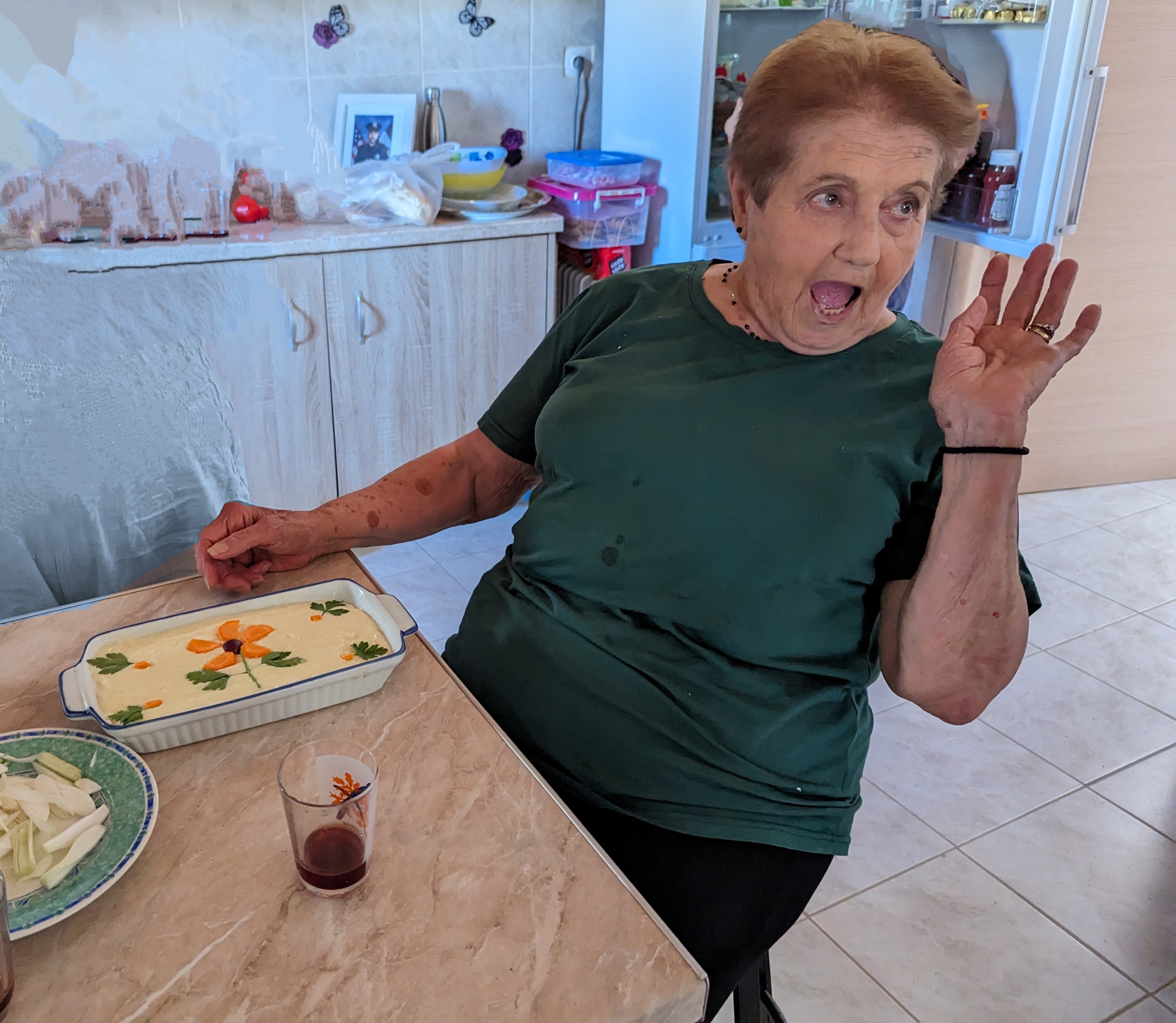
I would like to think this is a recipe even Yaiyai would approve.
Garlic Spread
1 cup garlic cloves, peeled
1 cup extra-virgin olive oil
1 teaspoon kosher salt
1 cup olive oil
Juice of 1/2 of a lemon
½ cup of Greek Yogurt
4 ounces of fresh Goat Cheese
Peel one cup of garlic cloves, about four garlic bulbs. Place the peeled garlic and the kosher salt in the food processor or a bullet blender. Blend until it’s well minced, scraping down the sides as necessary.
If you are using a food processor, slowly begin adding the oil. For a bullet blender, add half of the oil blend and then add the other half along with the lemon juice and blend until smooth. Add in the yogurt and goat cheese and blend until smooth.

